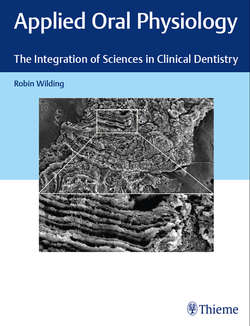Читать книгу Applied Oral Physiology - Robin Wilding - Страница 57
На сайте Литреса книга снята с продажи.
3.7.1 Loss of Epithelial Attachment
ОглавлениеIf plaque accumulates on subgingival surfaces of the tooth, there is a shift in the balance of microorganisms toward more gram-negative organisms which are anaerobic and proteolytic. They are capable of penetrating into the gingival lamina propria and junctional epithelium where they break down collagen and other proteins. They produce endotoxins to which the immune system responds with an infiltration of neutrophils into the damaged epithelium and submucosa. The neutrophils engulf the bacteria which are then killed by enzymes inside lysosomes within the cell. The neutrophil may itself die and break up releasing the toxic content of lysosomes into the tissue which do further damage. A colorful metaphor describes this situation, as a battlefield littered with and polluted by the dead, both defending soldiers and enemy. The initial clinical manifestation of this shift in the dominance of some organisms is inflammation, redness, and swelling of the marginal gingiva. If a periodontal probe is inserted into the gingival sulcus, light bleeding occurs. This sign, bleeding on probing, is an important marker of gingivitis.
The breakdown of the junctional epithelium causes loss of its hemidesmosomal attachment to enamel. Loss of attachment is not readily recovered. It may allow progress of pathogenic bacteria into the periodontal ligament and damage the periodontal ligament and surrounding bone. The clinical manifestation of this progression is the presence of a pocket between the tooth and the periodontium (▶ Fig. 3.13). If the depth of the gingival sulcus is now measured, an increase beyond the normal 2 mm may be found. Deep pockets of over 4-mm depth indicate some loss of bone height and may lead to tooth mobility and eventual tooth loss.
Fig. 3.13 A diagrammatic representation of loss of epithelial attachment to the tooth and the development of a pocket with loss of periodontal ligament attachment to cementum. There has been bone loss from the crest of the alveolar bone. The junctional epithelium has grown down into the pocket preventing reattachment of periodontal fibers.
The oral bacteria associated with the development of inflammation in the periodontium are thought to be a consortium of organisms, which interact to cause periodontal disease together. They include Porphyromonas gingivalis, Treponema denticola, and Tannerella forsythia (see Chapter 4.3.6 From Symbiont to Pathobiont).
